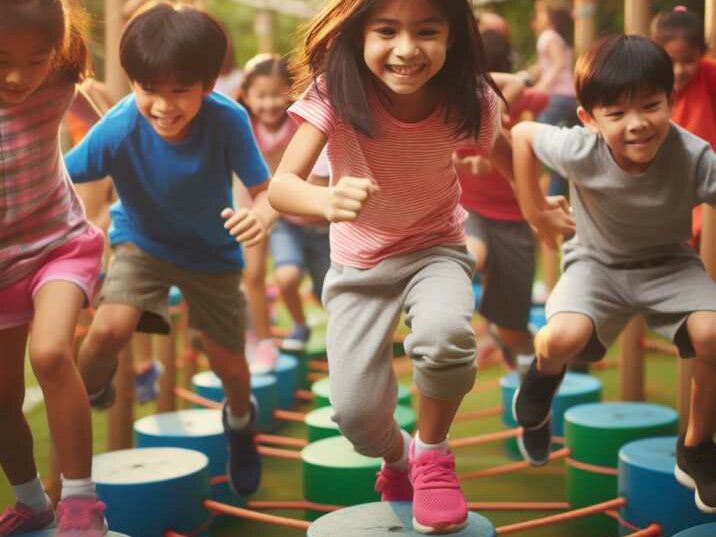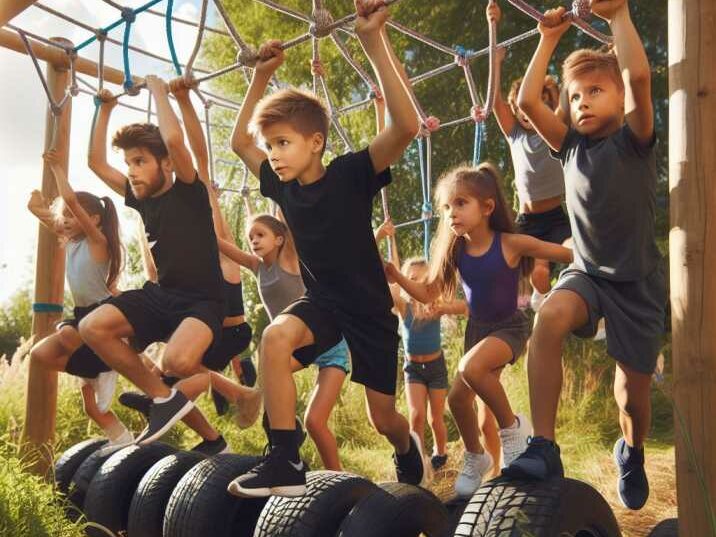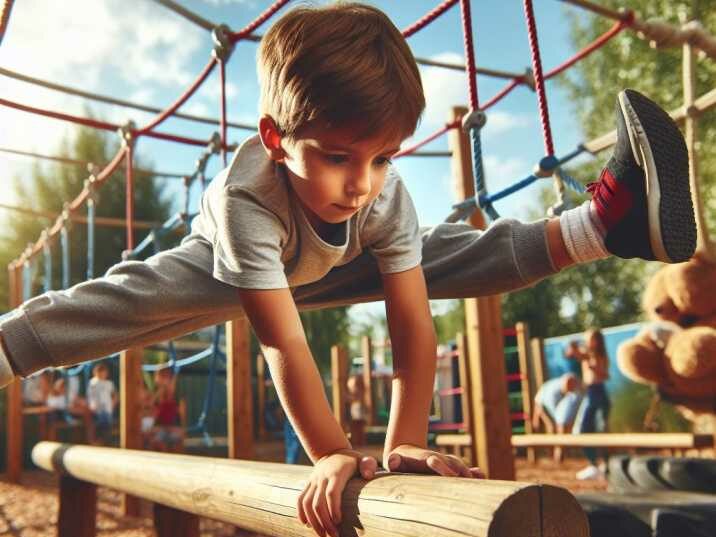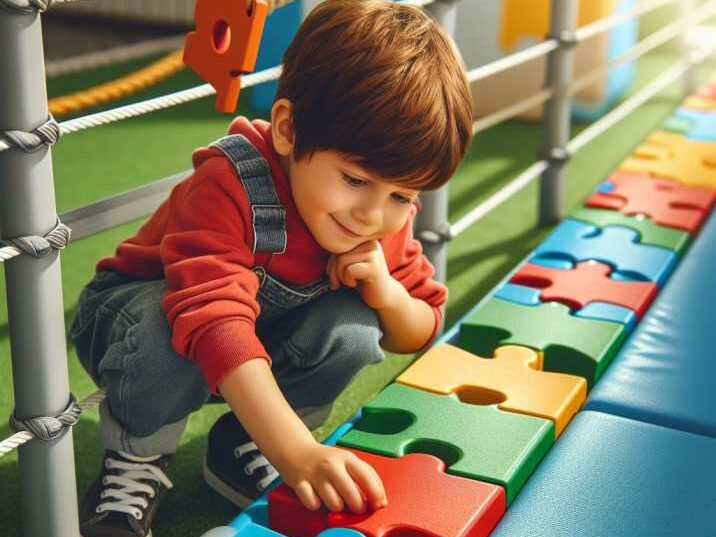Agility for Kids through Obstacle Course Activities
Table of Contents
Introduction
In the dynamic landscape of child development, fostering agility is paramount. As parents, educators, and caretakers, we seek ways to enhance our children’s physical and mental capabilities. One powerful method gaining increasing attention is the incorporation of obstacle courses in their routine. In this comprehensive guide, we will delve into the multifaceted benefits of obstacle courses in shaping the agility of young minds and bodies.

Understanding Agility in Kids
Before we explore the impact of Agility for Kids through Obstacle Course Activities , let’s clarify what we mean by “agility” in the context of children. Agility encompasses a combination of speed, balance, coordination, and quick decision-making – all crucial skills for navigating the challenges of life. It goes beyond the physical domain, extending into cognitive and emotional realms.
The Starting Line: Why Obstacle Courses Matter
The Power of Play
At the heart of every child’s world is play – a magical realm where learning happens organically. Obstacle courses, with their twists, turns, and challenges, transform playtime into an educational adventure. These courses engage children physically and mentally, providing a holistic approach to development.

Building Physical Fitness
Obstacle courses require children to run, jump, crawl, and climb, fostering cardiovascular endurance and muscular strength. This physical activity lays the foundation for a healthy lifestyle, reducing the risk of childhood obesity and related health issues.
Enhancing Motor Skills
From navigating narrow pathways to crossing balance beams, obstacle courses hone fine and gross motor skills. These skills are pivotal for daily tasks such as writing, tying shoelaces, and participating in sports.
The Impact on Cognitive Development
Problem-Solving in Action
Navigating through obstacles demands quick thinking and problem-solving skills. As kids strategize their way through each challenge, they develop cognitive flexibility and resilience, vital for academic success and life beyond the classroom.
Boosting Concentration and Focus
Obstacle courses require sustained attention, as children must stay focused on the task at hand. This heightened concentration transfers to academic pursuits, aiding in tasks that demand prolonged focus, such as reading and problem-solving.
Embracing Healthy Risk-Taking
Within the controlled environment of an obstacle course, children learn to assess risks and make decisions. This nurtures a healthy approach to risk-taking, instilling confidence and a sense of accomplishment.

Key Elements of Effective Obstacle Courses
Safety First: Constructing Kid-Friendly Courses
When designing obstacle courses for kids, safety should be the top priority. Utilize soft landing surfaces, secure equipment, and age-appropriate challenges to ensure a risk-free environment for exploration.
Incorporating Variety: The Spice of Agility
To address the diverse aspects of agility, a well-rounded obstacle course should include elements that challenge balance, coordination, speed, and strength. A mix of climbing structures, tunnels, balance beams, and stepping stones ensures comprehensive development.
Team Building and Social Interaction
Many obstacle courses are designed to be collaborative, encouraging teamwork and social interaction. This not only adds a fun dimension but also cultivates crucial interpersonal skills.
How to Integrate Obstacle Courses into Daily Life
At Home
Transform your backyard into a mini adventure zone with simple obstacles like stepping stones, a homemade balance beam, or a crawling tunnel. Encourage regular play sessions to make agility development a natural part of daily life.
In School
Educators can incorporate obstacle courses into physical education classes or recess. Collaborative courses promote teamwork, fostering a sense of community and shared accomplishment.
Conclusion
In conclusion, the role of obstacle courses in enhancing agility for kids is undeniably significant. As we witness the positive impact on physical fitness, cognitive development, and social skills, it becomes clear that integrating obstacle courses into a child’s routine is an investment in their future.
So, whether you’re a parent looking to create a backyard adventure or an educator seeking innovative ways to enrich your curriculum, embrace the power of obstacle courses. Unlock the potential within every child, guiding them toward a future where agility is not just a skill but a way of life.

Frequently Asked Questions (FAQS)
- Q: What age range is suitable for introducing obstacle courses to kids? A: Obstacle courses can be adapted for various age groups, starting as early as preschool age. The key is to tailor the challenges to the physical and cognitive abilities of the children.
- Q: Are obstacle courses safe for kids?
A: When designed with safety in mind, obstacle courses are generally safe for kids. Ensure proper supervision, use age-appropriate equipment, and choose soft landing surfaces to minimize the risk of injuries. - Q: How can parents create a simple obstacle course at home? A: Parents can use household items like cushions, hula hoops, and cardboard boxes to create a basic obstacle course. Combine these elements to encourage running, jumping, crawling, and balancing.
- Q: Can obstacle courses help with sensory development in kids? A: Absolutely! Obstacle courses stimulate various sensory experiences, including touch, balance, and spatial awareness. This can be particularly beneficial for children with sensory processing challenges.
- Q: Are there cognitive benefits to participating in obstacle courses? A: Yes, engaging in obstacle courses requires problem-solving, decision-making, and strategic thinking. These cognitive skills developed during obstacle courses can positively impact academic performance.
- Q: How often should kids participate in obstacle courses? A: The frequency depends on the child’s age and individual preferences. Ideally, incorporating obstacle courses into playtime or physical education activities a few times a week can be beneficial.
- Q: Can obstacle courses be adapted for children with disabilities? A: Yes, obstacle courses can be modified to accommodate children with various abilities. Consult with professionals, such as physical therapists, to create inclusive and accessible courses.
- Q: What role do obstacle courses play in promoting social skills? A: Obstacle courses that involve teamwork encourage collaboration and communication. These social interactions contribute to the development of important interpersonal skills.
- Q: Do schools commonly incorporate obstacle courses into their curriculum? A: While not universally implemented, many progressive schools recognize the benefits of obstacle courses and incorporate them into physical education programs or as part of recess activities.
- Q: Can obstacle courses be used as a form of therapy for children? A: Yes, obstacle courses are utilized in occupational therapy to address various developmental areas, including motor skills, sensory processing, and emotional regulation.
- Q: What is the ideal duration for an obstacle course session for kids? A: The duration can vary, but a well-designed obstacle course session for kids can typically last between 15 to 30 minutes, depending on the complexity of the challenges.
- Q: How can educators integrate obstacle courses into classroom learning? A: Educators can incorporate obstacle courses into lessons related to teamwork, problem-solving, and physical fitness. This provides a dynamic and hands-on approach to learning.


